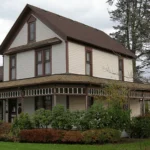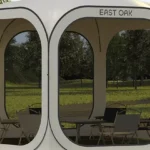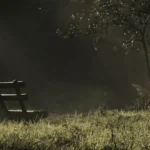Nestled in the heart of Sumner, Washington, the Ryan House stands as a beacon of the city's rich past and resilient community spirit. This historic landmark, dating back to the 1860s, has witnessed Sumner's transformation from a pioneer settlement to a vibrant modern city. Today, it faces a critical juncture, caught between the pressing demands of urban development and the community's endeavor to preserve its historical essence. The Ryan House's story is a compelling narrative of heritage, community involvement, and the ongoing struggle to maintain a tangible connection to the past.
The Historical Roots of Ryan House
The journey of Ryan House begins in the 1860s, built by Fred Seaman as a modest one-room cedar cabin. Its significance burgeoned in 1873 when George Ryan, a visionary pioneer from Wisconsin, acquired the property. George's indelible contributions to Sumner extended far beyond the expansion of his homestead. As Sumner's inaugural mayor, his efforts were instrumental in laying the foundation of a community that prized progress yet cherished its roots. Under his stewardship, Sumner burgeoned, with the Ryan House at its epicenter, serving variously as a post office, a meeting place for drawing the first plat of Sumner, and even as the nexus of the city's first telephone connection.
The Ryan House as a Community Hub
Over the decades, Ryan House transcended its role as a private domicile, morphing into a vibrant community hub. Its walls, which once echoed the daily lives of the Ryan family, began to resound with the broader narratives of Sumner. The house witnessed the town's evolution, serving as a silent custodian of its burgeoning identity. When the property was bequeathed to the city in 1926 by the Ryan heirs, it was with the expectation that it would continue to serve the public good. Transitioning from a library to the Sumner Historical Society's museum, Ryan House became a sanctuary of local history, offering insights into the city's past through its exhibits and the very fabric of its construction.
Challenges and Preservation Efforts
In recent years, the Ryan House has encountered significant structural and financial challenges that threaten its very existence. A comprehensive assessment revealed the harsh reality: the house's infrastructure was severely compromised, with renovation costs estimated to exceed $2 million. This daunting figure cast a shadow over the future of this historic edifice, prompting the Sumner City Council to vote in favor of its demolition in September 2023, with plans to replace it with a park.
However, the proposed demolition of the Ryan House has not gone uncontested. The local community, recognizing the house's invaluable contribution to Sumner's historical tapestry, rallied to its defense. The formation of the “Save the Ryan House” initiative marks a poignant chapter in the ongoing struggle to preserve the cultural heritage of Sumner. This grassroots movement underscores the deep connection between the community and its historical landmarks, showcasing the collective desire to retain this link to the past for future generations.
The challenge of preserving the Ryan House is emblematic of a broader issue faced by historic sites across the nation: how to balance the costs of preservation against the benefits of maintaining tangible connections to our collective history. As negotiations continue and the community seeks innovative solutions, the fate of the Ryan House remains a testament to the enduring value placed on historical preservation.
The Cultural and Educational Impact of Ryan House
Beyond its architectural significance, the Ryan House serves as a vital educational resource, offering residents and visitors alike a glimpse into the life of a pioneering family and the evolution of their community. Operated by the Sumner Historical Society, the museum within its walls has hosted numerous exhibits, educational programs, and events designed to enrich the public's understanding of local history.
The potential loss of the Ryan House as a museum would not only deprive the community of a cherished cultural asset but also eliminate a crucial educational platform. Museums like the Ryan House play an indispensable role in fostering a sense of identity, continuity, and understanding among community members. They act as guardians of local lore and tradition, offering tangible insights into the past that shape our present and inform our future.
Through its exhibits and programs, the Ryan House has illuminated the contributions of early settlers, the development of Sumner's agricultural and industrial sectors, and the evolution of community life over the decades. Its preservation would ensure that these stories, and the lessons they hold, remain accessible to all, fostering a deeper appreciation for the rich tapestry of Sumner's heritage.
The narrative of the Ryan House is far from over. As the community of Sumner stands at the crossroads of preservation and progress, the story of the Ryan House continues to unfold. Faced with challenges, the house's historical and cultural significance shines as a beacon of communal pride and resilience. The efforts to save it underscore the importance of heritage as a pillar of community identity and continuity.
As we move forward, the debate surrounding the Ryan House offers valuable insights into the complexities of preserving historical landmarks in modern society. It prompts us to consider what we value as a community and how we choose to honor our past. The story of the Ryan House is not just about a building; it's about the soul of Sumner and the lengths to which its residents will go to protect their shared history.
The Debate: Preservation vs. Progress
The discussion surrounding the Ryan House embodies a familiar tension faced by many communities worldwide: the delicate balance between preserving historical landmarks and accommodating the relentless march of progress. In Sumner, the potential demolition of the Ryan House has sparked a vigorous debate about the value of historical preservation in a rapidly evolving urban landscape.
Advocates for preservation argue that historical landmarks like the Ryan House are irreplaceable treasures, serving as physical links to our past. They contend that such structures provide a sense of place and continuity, enriching the community's cultural and historical landscape. Opponents, however, point to the practical challenges of maintaining and repurposing old buildings, especially when faced with prohibitive costs and safety concerns. They argue that in some cases, the land could be put to more productive use, benefiting the community in tangible ways.
This debate raises fundamental questions about identity, heritage, and the kind of legacy we wish to leave for future generations. It challenges communities to find creative solutions that honor their past while embracing the future. In Sumner, the fate of the Ryan House has become a rallying point for those who believe that history is not just about the past but is a living, breathing part of the present and future.
Looking Towards the Future
As the community grapples with these questions, the future of the Ryan House hangs in the balance. The outcome of this debate will probably set a precedent for how Sumner and similar communities address the challenges of historical preservation in the years to come. It underscores the need for innovative approaches that can reconcile the preservation of historical landmarks with the realities of modern urban development.
One potential path forward is the exploration of public-private partnerships, grants, and community fundraising efforts dedicated to the preservation of historical sites. Engaging the community in the preservation process can foster a deeper connection to local history and encourage a more inclusive approach to urban development. Additionally, adaptive reuse of historical buildings, transforming them into spaces that serve contemporary needs while retaining their historical essence, offers a viable compromise.
The story of the Ryan House is a microcosm of the broader struggles faced by communities attempting to preserve their historical landmarks. It highlights the complexities of balancing reverence for the past with the demands of the present and future. As Sumner moves forward, the lessons learned from the Ryan House debate will undoubtedly inform its approach to community development and historical preservation.
In the end, the legacy of the Ryan House, regardless of its physical fate, will live on in the hearts and minds of the Sumner community. It stands as a testament to the importance of history, not merely as a record of what has been but as a guidepost for what is yet to come. The ongoing efforts to save the Ryan House reflect a broader commitment to preserving the threads of history that bind communities together, ensuring that future generations can learn from and be inspired by the past.
As Sumner contemplates the future of the Ryan House, it does so with the understanding that preserving history is about more than saving old buildings—it's about honoring the shared experiences that define a community. In the dialogue between preservation and progress, finding a middle ground that respects both the past and the future is the key to creating a legacy that endures.
Through exploring the significance of the Ryan House within the context of Sumner’s history, community spirit, and the broader discourse on historical preservation, this narrative seeks to underscore the multifaceted value of preserving our collective heritage. The debate surrounding the Ryan House is emblematic of the challenges and opportunities that come with stewarding our past into the future, serving as a poignant reminder of the role that history plays in shaping our identity and guiding our path forward.

Lifelong bacon junkie. Lifelong internet fanatic. Hipster-friendly travel aficionado. Twitter lover. Avid food buff. Incurable travel trailblazer.













